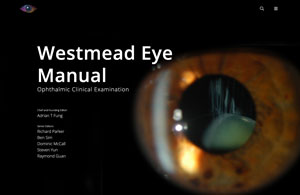30.2 Vitrectomy for Aqueous Misdirection
Aqueous misdirection syndrome (AMS), also known as malignant glaucoma or cilio-lenticular block was first described by Albrecht Von Graefe in 1869.[1] It is a type of secondary angle closure resulting from the re-direction of aqueous humour into the posterior chamber (PC) because of resistance to flow at the level of the lens equator, vitreous face and ciliary processes (Figures 30.2.1A & 1B).
Graefe A. Beiträge zur pathologie und therapie des glaucoms. Albrecht Von Graefes Arch Ophthalmol. 1869;15(3):108‐252.
AMS can manifest in either an acute or chronic form and can be caused by any intraocular procedure, with glaucoma incisional surgery being the most common precipitant. The incidence of AMS is reported to be up to 2% in patients who have undergone intraocular surgery of any form. It is more common in hyperopic females with narrow angles and those with a history of miotic use, primary angle closure (PAC) with peripheral anterior synechiae (PAS), and/or plateau iris configuration.[2] The presence of AMS in one eye increases the risk in the fellow eye. While intraocular pressure (IOP) is typically elevated in AMS, it may be normal or low in certain clinical contexts.
Żarnowski T, Wilkos-Kuc A, Tulidowicz-Bielak M, Kalinowska A, Zadrożniak A, Pyszniak E & Rękas M (2014): Efficacy and safety of a new surgical method to treat malignant glaucoma in pseudophakia. Eye (Lond)28:761–764.
AMS is a diagnosis of exclusion, requiring the absence of pupil block, suprachoroidal haemorrhage, and/or choroidal detachment with effusion. There are three characteristic clinical signs:
- shallowing of both central and peripheral anterior chamber (AC),
- a patent peripheral iridotomy or iridectomy (PI),
- an absence of choroidal elevation.
A dilated fundus exam, gonioscopy, ultrasound biomicroscopy (UBM), and anterior segment optic coherence tomography (AS-OCT) can confirm the diagnosis by visualising closure of the AC angle, anterior rotation of the ciliary body, and the configuration of the iris and lens (Figure 30.2.2).
AMS has been described following surgery (cataract, glaucoma filtration, vitrectomy) and laser procedures (iridotomy, suture lysis, Neodymium-Doped: Yttrium-Aluminium-Garnet [Nd:YAG] capsulotomy and cyclodiode). Less commonly it can be traumatic or spontaneous in origin. Several theories attempt to explain the underlying cause of AMS, though the reasons for the redirection of aqueous posteriorly and the continuous posterior flow remain unclear. In the context of surgery, overfiltration and low IOP within the AC may result in a pressure gradient between the anterior and posterior chamber, leading to shallowing of the AC and anterior rotation of the ciliary body. A malignant cycle of posterior chamber pressure rise due to aqueous build up that cannot be decompressed to balance AC pressure results in forward displacement of the iris and lens-diaphragm. The reduced permeability of the anterior hyaloid appears to be a pivotal factor in both the onset and persistence of this disorder by trapping aqueous within the vitreous body.
All rights reserved. No part of this publication which includes all images and diagrams may be reproduced, distributed, or transmitted in any form or by any means, including photocopying, recording, or other electronic or mechanical methods, without the prior written permission of the authors, except in the case of brief quotations embodied in critical reviews and certain other noncommercial uses permitted by copyright law.
Westmead Eye Manual
This invaluable open-source textbook for eye care professionals summarises the steps ophthalmologists need to perform when examining a patient.

